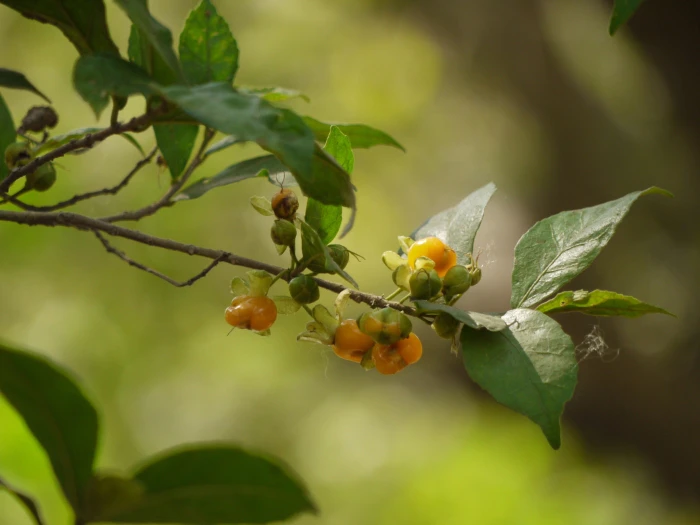Siamese Rough Bush
(Streblus asper)
Siamese Rough Bush (Streblus asper)
/
/

© Dinesh Valke
CC BY-SA 4.0
Image By:
© Dinesh Valke
Recorded By:
Copyright:
CC BY-SA 4.0
Copyright Notice:
Photo by: © Dinesh Valke | License Type: CC BY-SA 4.0 | License URL: http://creativecommons.org/licenses/by-sa/4.0/ | Uploader: dineshvalke | Publisher: iNaturalist |

























Estimated Native Range
Climate Requirements for Oviedo, Florida
| This Plant | Your Site | Plant Suitability for Your Location | ||
|---|---|---|---|---|
| • Precipitation | 23" - 149" | 49" | Aquatic | Aquatic |
| • High Temp. | 75°F - 106°F | 91°F | Your summer temperatures are normal for this plant. | Excellent |
| • Low Temp. | 3°F - 74°F | 48°F | Your winter temperatures are normal for this plant | Excellent |
This plant should grow well at your location with about N inches per year (Y minutes per month) of irrigation.
Summary
Streblus asper, commonly known as Siamese rough bush or toothbrush tree, is a deciduous tree native to a variety of habitats including dry deciduous forests, open woodlands, and scrub areas across South and Southeast Asia, specifically in Indonesia, Cambodia, Thailand, India, Sri Lanka, Malaysia, and Vietnam. It typically grows to a height of 10-15 meters with a dense, rounded canopy. The leaves are distinctive with their rough, sandpapery texture, oval shape, and are dark green in color. The small, inconspicuous greenish-yellow flowers bloom in clusters, but the tree is not grown for its floral display.
Streblus asper is valued for its historical significance in traditional papermaking and its use in folk medicine. Its bark, which has been used for centuries to produce durable paper for Buddhist texts and official records, is also known for its antibacterial properties. The tree’s twigs are traditionally used as a natural toothbrush, helping to maintain oral health. In cultivation, it is often used in reforestation projects and can be planted as an ornamental in xeriscaping due to its drought tolerance. It requires full sun to part shade, well-drained soil, and can withstand poor soil conditions. While generally pest-resistant, it can occasionally suffer from leaf spot diseases.CC BY-SA 4.0
Streblus asper is valued for its historical significance in traditional papermaking and its use in folk medicine. Its bark, which has been used for centuries to produce durable paper for Buddhist texts and official records, is also known for its antibacterial properties. The tree’s twigs are traditionally used as a natural toothbrush, helping to maintain oral health. In cultivation, it is often used in reforestation projects and can be planted as an ornamental in xeriscaping due to its drought tolerance. It requires full sun to part shade, well-drained soil, and can withstand poor soil conditions. While generally pest-resistant, it can occasionally suffer from leaf spot diseases.CC BY-SA 4.0
Plant Description
- Plant Type: Trees
- Height: 10-20 feet
- Width: 8-12 feet
- Growth Rate: Slow
- Flower Color: N/A
- Flowering Season: Spring
- Leaf Retention: Evergreen
Growth Requirements
- Sun: Full Sun, Part Shade
- Water: Medium
- Drainage: Medium
Common Uses
Low Maintenance
Natural Habitat
Dry deciduous forests, open woodlands, and scrub areas
Other Names
Common Names: Toothbrush Tree , Shiva’s Tree , Siamese Rough Bush
Scientific Names: Streblus asper , Achymus pallens , Achymus pallens , Achymus patens , Albrandia gaudichaudii , Albrandia orientalis , Albrandia timorensis , Calius lactescens , Cudrania crenata , Diplothorax tonkinensis
GBIF Accepted Name: Streblus asper